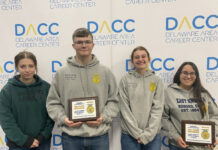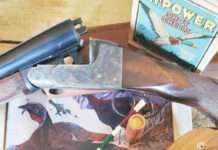At the very beginning of the pandemic, we brought two orphaned Nigerian dwarf goats home, a little white female and an equally tiny black male. It was bitterly cold, and the forecast, both literally and metaphorically, predicted more of the same.
My kids were barely out of diapers, so it made sense to take in two tiny, helpless creatures who were too vulnerable to survive outside — and therefore needed to be diapered — because we had the supplies, and, well, I was still in that mode.
In truth, the babies didn’t seem all that vulnerable. And the diapers didn’t work all that well, especially because the goats were constantly leaping off the back of the couch or tumbling together at full speed across the living room floor. So I spent a lot of that cold spring cleaning the floor and carpet. I don’t remember now if I was annoyed by this or not. What I do remember is how adorable and chaotic those days were, and what a welcome distraction the chaos was.
The weather got warmer; the goats got bigger. We moved them to a small dog house tucked into the big garden beside the house. I was still feeding them bottles, so I would visit them at least twice a day, morning and evening.
We’d also take them for walks through the greening grass along the gravel section line and they’d follow the kids to jump amongst the last of the winter hay bales. A year passed, and in a blink of an eye they were full-grown — which is to say, still quite tiny. Neither ever grew above my knees.
For the last few summers, we’ve used them to graze down weed patches around the ranch, and they’ve spent their winters in a pen beside the old chicken coop, which has also served as their personal barn. They have been remarkably low maintenance.
Like every other goat on the planet, they’ve made their fair share of successful escape attempts, but whenever we found them someplace they weren’t supposed to be, they would cheerfully follow us back to where they were supposed to be. Unlike many of the other animals under our care, this made me suspect given the option, they would trade some of their freedoms for more time with their people.
We’d planned to bring them to the little red barn in town so they could graze down the thistles, grasses and tiny trees that sprouted in the corral after we moved the sheep to summer pasture. But then, they got out of their pen and started grazing the windbreaks at the ranch instead. My flower pots are at the town house now, as is the kitchen garden, so there really wasn’t much for them to get into. The man of the ranch decided to let them be, and they’ve been peacefully free-ranging ever since.
Until this week, when we had to admit the waist-high greenery in the corral needed to be dealt with sooner rather than later. I enlisted the kids to help gather them, but when we pulled into the yard with the livestock trailer, the goats came running toward me and followed me into the trailer as if they had done it every day of their lives. Once we got to town, they followed me out and into their new home just as easily. They’ve been happily eating and playing ever since.
If either the kids or I pass by the corral, they will mumble a soft hello through their full mouths, and if any of us approach the gate they rush over to greet us. Chicken chores are taking a lot longer now as I have to walk past them to get to the coop, and that requires the extended distribution of chin and ear scratches. I am also back to hauling buckets of water across the yard.
In conclusion, my hypothesis that our goats would trade some freedom for affection seems to be accurate, as does a similar hypothesis that I would gladly take on more chores if it makes my animal beloveds happy. What luck!













